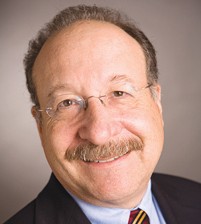Dubroff: UCSB scientist hunts for next battery breakthrough
If the long reign of the lithium battery is going to come to an end, it may be research by a UC Santa Barbara scientist that helps to deliver a cheaper and less geopolitically risky solution.
Raphaele Clement, an assistant professor in materials science at UCSB, has been testing innovative approaches to new battery chemistry — and collecting some impressive awards. She leads a team of 15 researchers, and she told me during a recent interview that the department could soon add another faculty member as it pursues the next battery breakthrough.
“Lithium-ion has ruled the battery industry for 35 years, but sodium is coming back into fashion,” she said, echoing the idea I first read about in an October issue of the Economist. It was that article and a recent visit to UCSB’s Institute for Energy Efficiency that sparked my interest.

Clement, who received her undergraduate, master’s and Ph.D. degrees from the University of Cambridge, came to UCSB via Berkeley, which has been a leader in battery R&D. Her thesis advisor at Cambridge was Clare Grey, a pioneer in battery research and Fellow of the Royal Academy.
Sodium ions are larger than lithium, but they share similar properties, Clement told me during our chat on Zoom.
“That’s why it’s a good alternative,” she said.
Unlike lithium, which is relatively rare and predominantly processed in China, sodium deposits are plentiful, especially in the U.S. which has the world’s largest supply of sodium-rich soda ash.
“It’s fairly easy to find and very cheap,” she said adding that eventually sodium could be extracted from seawater.
However, finding the right chemistry to create a consistent flow of electricity from sodium batteries is a different matter. In the next generation of batteries, the liquid electrolyte that is at the heart of the lithium-ion battery will likely be replaced by materials in a solid state that will not catch fire or degrade as quickly over time.
For now, Clement is working on solid-state batteries that are both lithium and sodium and looking for innovative solutions that could eventually be commercialized and she said the horizon for solid-state battery development is five to 10 years away.
“My job is to better understand why materials are not optimal and degrade over time,” she said, and to look for “new chemistries and material that would be even better and more sustainable and cheaper.”
Her work is particularly focused on improving the cathode or positively charged electrode. Cobalt and nickel are typically used in lithium-ion battery cathodes and both metals are mined in ways that cause vast environmental damage. “If you improve the cathode, you improve the battery,” Clement said, adding that manganese, a very common metal, is a promising alternative.
Clement said that China is well ahead in producing sodium-ion batteries for autos and although they won’t have the range of lithium-ion powered vehicles, they are fine for in-city driving. Sodium-ion batteries for solar power backup could be a breakthrough because size and weight are not as important in those applications.
Clement’s research is getting noticed. She was named a Rising Star by the publication Materials Today earlier this year and won the ISE prize in electro-materials science by the International Society of Electrochemistry. Her advisor and mentor, Grey, was named a Dame Commander of the Order of the British Empire in the 2022 royal honors list.
While Clement and Grey are among a very small number of women scientists in the battery field, that number is growing. Clement said that at least half of her team of 10 Ph.D. candidates and five post-docs are women and, perhaps because batteries are a new field with huge demand for talent, there are jobs in the industry waiting for them, Clement said. “It’s still very much a male world.”
Clement said her focus is on finding and testing advanced materials and then forming partnerships with industry for commercialization. She said that her goal for UCSB is to help the university grow its battery research into more of a hub. Making batteries that are more efficient out of more abundant materials could solve “an important societal problem,” she said.
Henry Dubroff is the founder, owner and editor of the Pacific Coast Business Times. He can be reached at [email protected].









